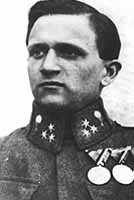
FeldwebelJulius Busa was an Austro-Hungarian World War I flying ace credited with five aerial victories during 1916. He was also notable for twice surviving direct hits by antiaircraft shells, saving his aircraft and aerial observer on both occasions. Busa scored all his aerial victories while engaged in general purpose missions in two-seater reconnaissance airplanes. His valor would be rewarded with Austria-Hungary's highest award for non-commissioned officers, the Gold Medal for Bravery. He also won three Silver Medals for Bravery—two First Class and one Second Class. Busa was killed in action by Francesco Baracca on 13 May 1917.
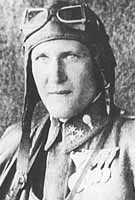
Julius Kowalczik was a Austro-Hungarian World War I flying ace credited with five aerial victories. Though he joined military service as the war began in 1914, he did not transfer to the Austro-Hungarian Aviation Troops until late 1915. Qualified as a fighter pilot in February 1916, he went into action in northern Italy the following month. He would score five aerial victories between 14 October 1916 and 29 June 1917. After surviving being shot down by Italian aces Antonio Amantea and Antonio Riva on 24 August 1917, Kowalczik was reassigned to instructor duty in January 1918. He survived the war, having won two Silver and two Gold Medals for Bravery.

StabfeldwebelJohann Lasi was a World War I Austro-Hungarian flying ace, a Croat by ethnicity, credited with five aerial victories on 22 Aug 1916, while acting as an unauthorized rear gunner for Julius Arigi.

OberleutnantKurt Nachod served during World War I in the Austro-Hungarian Air Force, in which he was credited with downing five enemy aircraft, ranking him 42nd in the list of Austro-Hungarian flying aces. Unusually, all of these victories were gained while acting as an observer.
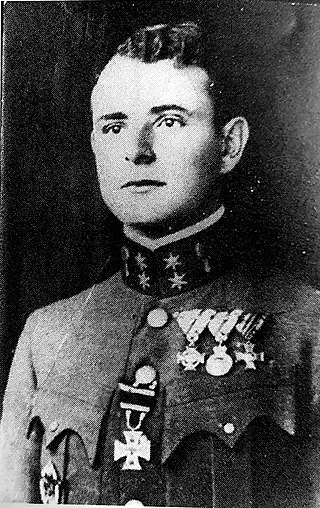
OberleutnantKarl Patzelt (1893-1918) was an Austro-Hungarian World War I flying ace credited with five aerial victories. Entering World War I as an officer in an infantry regiment, he distinguished himself during the first two years of the war. Decorated twice for valor, he was also honored by a rare early promotion in rank. A serious wound inflicted on 16 June 1916 hospitalized him. While recuperating, he transferred to aviation service. Trained and posted as a technical officer for Flik 29J in Romania, he volunteered to fly as an observer with Andreas Dombrowski. On their missions, Patzelt would benefit from Dombrowski's tuition as a pilot, while downing two enemy aircraft with the observer's gun. In October, Patzelt was transferred to the Italian Front to observe at the Battle of Caporetto. By mid-November 1917, he was flying with a fighter squadron, Flik 42J. He would score three more victories before being killed in action on 4 May 1918.
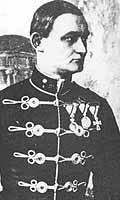
OberleutnantRudolf Szepessy-Sokoll Freiherr von Negyes et Reno was a Hungarian World War I flying ace credited with five aerial victories. He began his military career as a cavalryman as the war began in 1914. After winning the Silver Medal for Bravery and being promoted into the officers' ranks, he transferred to the Austro-Hungarian Aviation Troops in mid-1915 as an aerial observer. On 14 February 1916, while participating in a historic strategic bombing raid on Milan, he scored his first aerial victory. After shooting down another airplane and an observation balloon, Szepessy-Sokoll was transferred to a fighter unit after pilot training. After shooting down a pair of Macchi L.3s on 5 November 1917, he was killed in action the next day.

FeldwebelKarl Teichmann (1897–1927) was a Austro-Hungarian World War I flying ace credited with five aerial victories. His path to aerial victories began in 1915, when he joined the Austro-Hungarian infantry. His prewar training as an auto mechanic saw him assigned as an aviation mechanic on the Russian Front in February 1916. After eight months, he began pilot training, being awarded Austrian Pilot's Certificate 658 on 16 May 1917. Reassigned to the Italian Front, he scored five victories—three shared—between 26 September 1917 and 22 August 1918. Teichmann would survive the war and die of natural causes in Graz, Austria.
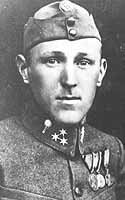
FeldwebelAlexander Kasza was an Austro-Hungarian World War I flying ace credited with six aerial victories.
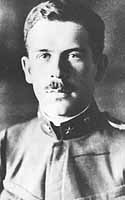
Oberleutnant Josef Pürer (1894-1918) was an Austro-Hungarian World War I flying ace credited with six aerial victories. A volunteer for the artillery when the war began, he fought for two years on the Russian Front. He was commissioned as an officer on 1 January 1916; later that year he transferred to the Austro-Hungarian Aviation Troops. He served as an aerial observer in northern Italy until early 1918. After scoring six aerial victories, he was trained as a fighter pilot by 11 July 1918. He was killed in action by Sidney Cottle on 31 August 1918.

OberleutnantRudolf Weber (1890-1918) was an Austro-Hungarian World War I flying ace credited with six aerial victories. Weber was an experienced infantry officer when World War I began in 1914, and he went into action on the Russian Front. He transferred to aerial service in late 1915. During his 1916 service as an observer, he scored his first victory and suffered a disfiguring wound to his face. Once healed, he trained as a pilot and returned to action, but on the Italian Front. Between 11 August and 26 October 1917, he scored five more victories. In January 1918, he was posted to command Flik 102G, a night bombing squadron. In October 1918, as the Austro-Hungarian Empire dissolved in defeat, Weber led an exodus home from his unit. Along the way, a trigger-happy militiaman shot Weber to death.

OberleutnantLudwig Hautzmayer (1893-1936) was an Austro-Hungarian World War I flying ace credited with seven aerial victories. He was a prewar reserve infantry officer; when war broke out, he fought until suffering a severe leg wound on 8 September 1914. When recovered, he transferred to the Austro-Hungarian Aviation Troops as an aerial observer in March, 1915. After 40 combat missions on the Eastern Front, he underwent fighter pilot training. Once qualified, he was posted to the Isonzo Front, where he became an ace. Appointed commander of his own fighter squadron, Flik 61J, he was one of the few reserve officers so entrusted as a leader. After scoring two more victories, he ended the war with multiple decorations, up to the Order of Leopold. Postwar, he flew as an airline pilot for Malert until killed in a crash at Croydon, England on 9 December 1936.
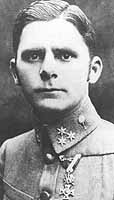
Hauptmann Josef von Maier was an Austro-Hungarian World War I flying ace credited with seven aerial victories. József Modory

OberleutnantAlexander Tahy was a Hungarian World War I flying ace credited with eight aerial victories while serving with the Austro-Hungarian Aviation Troops. He began the war as an artilleryman, winning the Silver Medal for Bravery in May 1915. In early 1916, he transferred to aviation duty as an aerial observer. Between 3 December 1916 and 26 June 1917, he was credited with five aerial victories for Fliegerkompanie 19, earning another three decorations. Having taught himself to fly, he transferred to a fighter unit, Fliegerkompanie 51J for his last three victories. On 7 March 1918, Tahy died in a flying accident. His greatest honor came after his death, when he was awarded the Knight's Cross of the Order of Leopold with War Decorations and Swords.
Hauptmann Heinrich (Jindřich) Kostrba was an Austro-Hungarian aviator, the first which to score three victories in a single day, on 18 February 1916, and three more on 29 June 1916. He went on to amass eight aerial victories and become a squadron leader and flying ace.

Kurt Gruber was an Austro-Hungarian flying ace during the First World War who held the rank of Offiziersstellvertreter. He was credited with eleven aerial victories, 5 shared with other pilots.
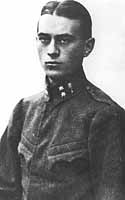
Stabsfeldwebel Ferdinand Udvardy was a Hungarian conscript into the military of the Austro-Hungarian Empire who became a flying ace credited with nine aerial victories. Upon the dissolution of Austria-Hungary, Udvardy became a Hungarian citizen, and in the aftermath of World War I, defended his new nation against invasion.















